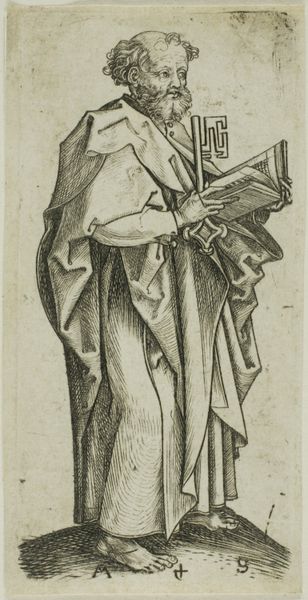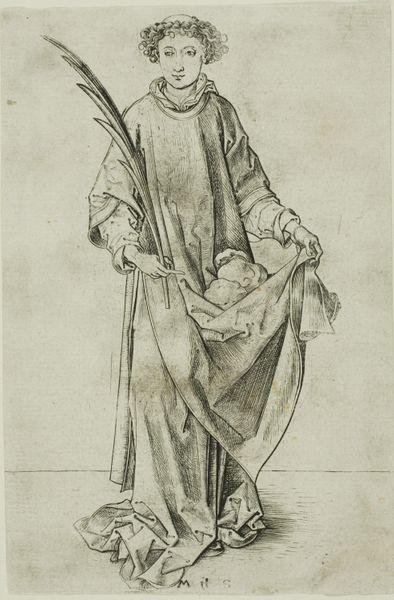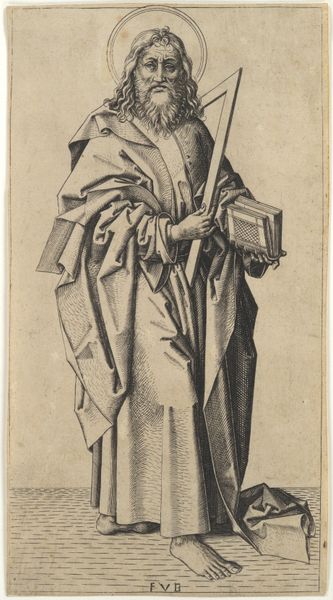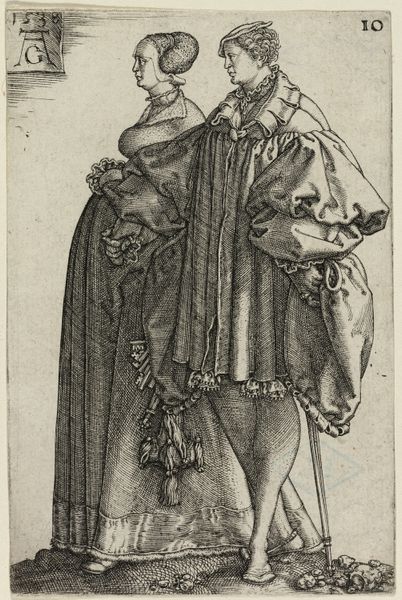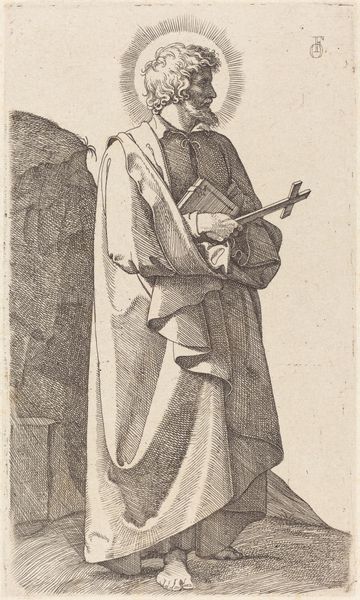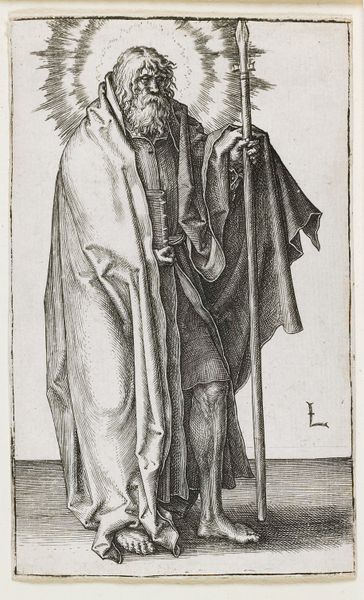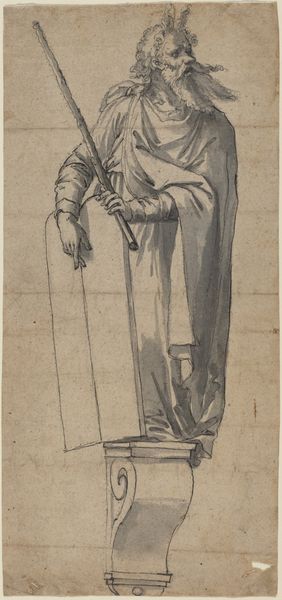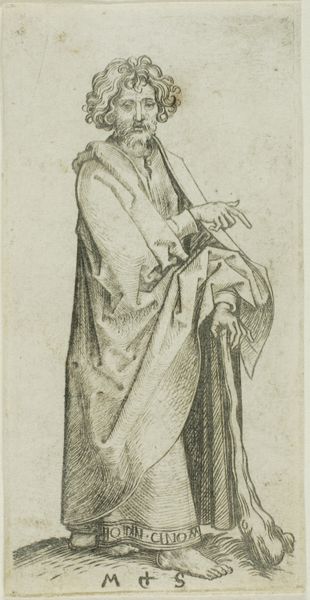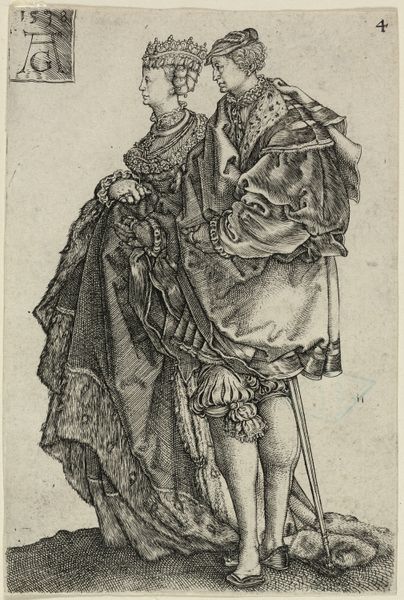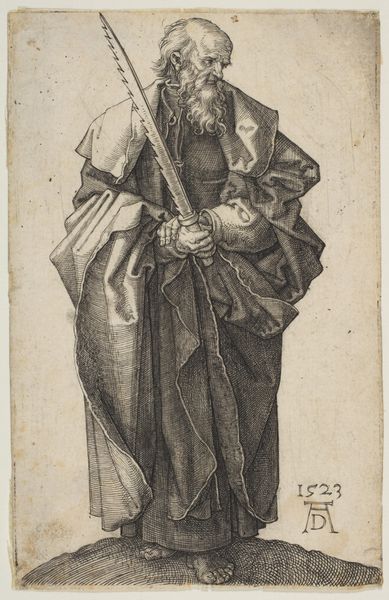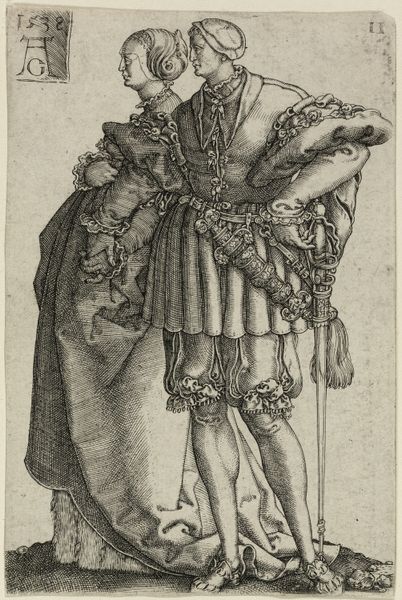
print, engraving
#
portrait
# print
#
figuration
#
northern-renaissance
#
engraving
Dimensions: sheet (trimmed to plate): 18.1 x 9.5 cm (7 1/8 x 3 3/4 in.)
Copyright: National Gallery of Art: CC0 1.0
Curator: This is "Saint Simon," an engraving crafted between 1490 and 1500 by the artist known only as Master FVB, working within the Northern Renaissance tradition. Editor: Immediately, I'm struck by a kind of weary grace. He carries the cross, almost nonchalantly, and those bare feet... they ground him, quite literally, to the earth. Curator: It's fascinating how Master FVB presents Simon. The figure of Simon, historically linked to the crucifixion narratives and often interpreted through a lens of reluctant participation, carries complex socio-political dimensions concerning forced labor and resistance. Editor: I see it too! His gaze isn't heavenward, but off to the side, almost contemplative. The cross, typically a symbol of suffering, here feels like a burden accepted, a path chosen. Note how its rough texture contrasts with the saint's elaborately draped robes—the tension suggests both humility and power. The book adds an additional element, like it represents knowledge but also requires seeing – the glasses are just sitting there... Curator: Yes! It brings to mind the socio-economic context. Who had access to knowledge and learning? Master FVB uses signifiers of wealth and knowledge and superimposes these qualities onto someone who carries this very potent, politicized symbol of the cross. Consider the key hanging from his belt too... what spaces does it unlock? Editor: Symbolically, a key represents authority, initiation, and secrets revealed. Perhaps it suggests Saint Simon has access to deeper truths, an unlocked understanding granted through sacrifice? Or perhaps, going back to our current times, does he still guard that access for a very restricted elite? Curator: Exactly! That intersectional reading is so vital. Are we examining faith and access to God, or power dynamics solidified within earthly systems of governance and privilege? These early engravings often acted as tools of power but simultaneously were more widely accessible due to their reproducibility... It becomes an interesting dialogue of intended reception. Editor: Ultimately, this image lingers, doesn't it? The questions of duty, resistance, and the cost of bearing witness resonate even now. Curator: Absolutely, placing "Saint Simon" within the larger framework of societal structures forces us to confront continuities between the historical and the contemporary. We grapple with legacies of power, access, and individual burdens.
Comments
No comments
Be the first to comment and join the conversation on the ultimate creative platform.

